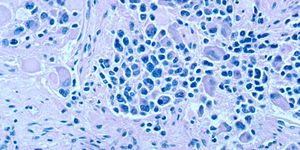Mushroom Chemistry: Pick Your Poison, or Not
Consuming wild mushrooms is largely frowned upon because it can lead to food poisoning. Its consequence ranges from vomiting and diarrhea to death within days.
If picking wild mushroom is something you are dying to try, here are some tips to tell the leathal fungi apart from the safe ones.
Amanita phalloides, also known as the death cap, is a deadly mushroom with a pale, yellowish cap and a sizeable aboveground body. The full-body fungus contains two toxins: alpha- and beta-amanitin. These RNA polymerase II-inhibiting compounds can cause fatal liver damage when ingested.
Amanita muscaria, is commonly known as the fly agaric or fly amanita. This white-gilled and white-spotted red mushroom has an iconic toadstool shape. It contains muscimol, a potent psychoactive constituent that causes sedative-hypnotic psychoactivity and hallucination.
The phallotoxins won't probably kill you or make you hallucinate. These structurally-related compounds can be found in many Amanita mushrooms, and they cause extremely upset stomachs because of their gastrointestinal irritating nature.
Source: ACS Reactions via Youtube








